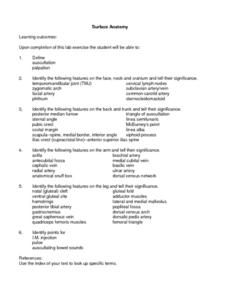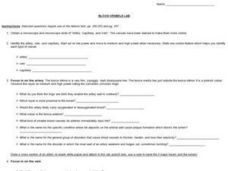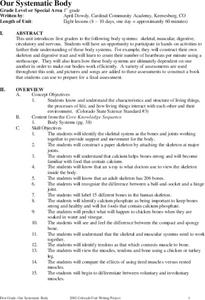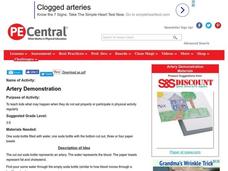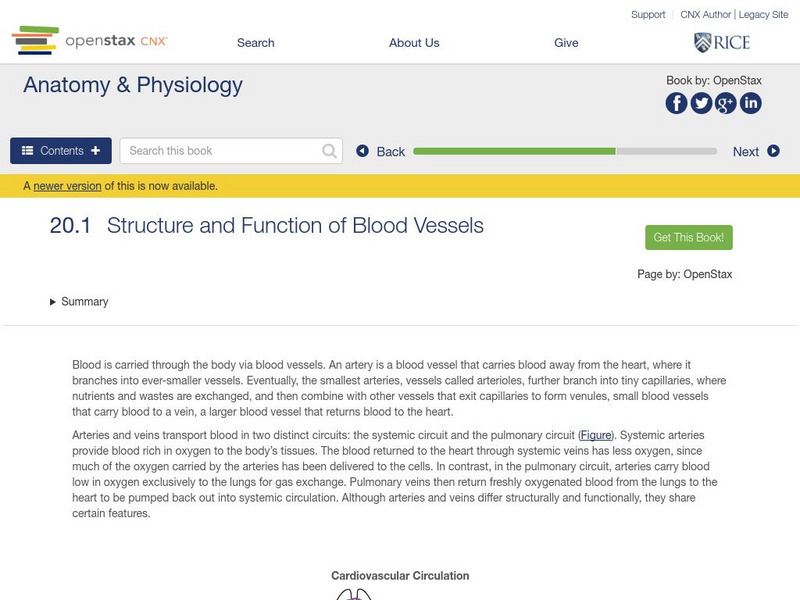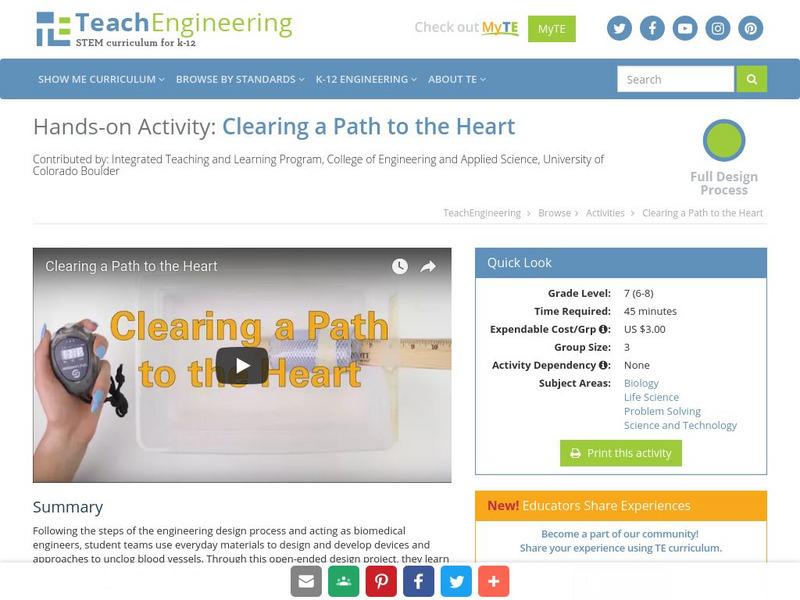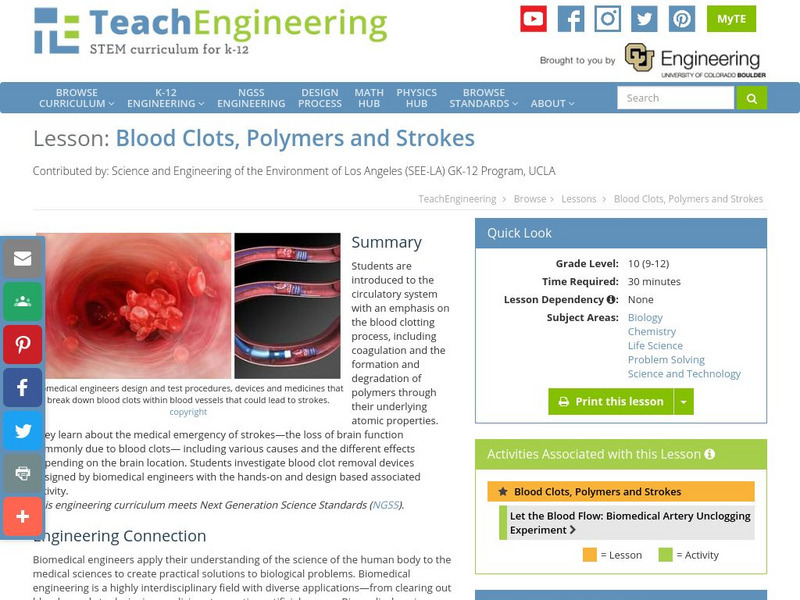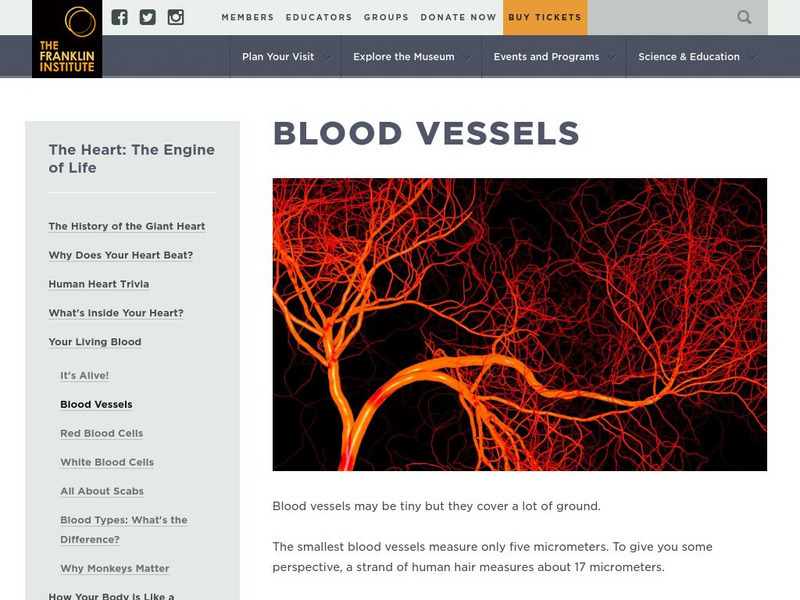Scholastic
Study Jams! The Circulatory System
The topic of this video is sure to get hearts pumping! Mia and Zoe just finish racing and discuss what is going on in the circulatory system. They expound on the capillaries, veins, arteries, the structure of the heart, and the...
Curated OER
Circulation
Learners define the functions of the circulatory system. In this body circulation lesson students see how engineers have involvement with the circulatory system.
Curated OER
Pulse and Blood Pressure
In this blood pressure activity, learners compare their heart rate at rest and after exercise and their blood pressure at rest and after exercise. This activity has 6 fill in the blank and 12 short answer questions.
Curated OER
Respiration, Circulation, and Excretion
In this body systems worksheet, students place 11 vocabulary words into a word puzzle by matching the terms with their definition. The vocabulary words are review of the respiratory, circulatory, and urinary body systems.
Curated OER
Your Beating Heart - Circulatory System
Students illustrate a schematic circulatory system of a human body including heart, lungs, arteries, veins and capillaries. Next, students conduct an experiment to increase understanding of the relationship between heart rate/pulse and...
Curated OER
Inflamm-O-Stories: Progression and Regression of Atherosclerosis
Students participate in activities to learn about Atherosclerosis. In this investigative lesson students participate in activities that allow them to describe parts of the body, analyze changes in the body and write a story about their...
Curated OER
Surface Anatomy
In this anatomy worksheet, students identify auscultation and palpation through a lab exercise. They identify various features on the face, neck and cranium and describe their significance. Students also identify points for injection,...
Curated OER
Clogged Arteries
Learners participate in active demonstrations to explore the understanding of cholesterol in an artery. Students stand outside hula hoops to represent an artery. When they are tagged, they become a piece of cholesterol. Learners...
Curated OER
Blood Vessels Lab
In this blood vessel worksheet, students compare microscope slides of arteries, veins, and capillaries. This worksheet has 43 fill in the blank questions.
Curated OER
Our Systematic Body
Students explore several parts of the body system in the eight lessons of this unit. Through several hands-on activities, the skeletal, muscular, digestive, circulatory and nervous systems are observed.
Curated OER
Artery Demonstration
Students learn what may happen when they do not eat properly or participate in physical activity regularly
National Cancer Institute at the National Institutes of Health
Seer Training Modules: Introduction to the Cardiovascular System
Self-guided learning activity where students learn about the structure and function of the human cardiovascular system. There is a short quiz at the end of the lesson to check for understanding.
Science Buddies
Science Buddies: A Day in the Life of Your Heart
Heart rates can be determined by the amount of physical activity your body is engaging in. The more physically active you are, the faster your heart beats. You can measure the rate your heart is beating by taking your pulse. This science...
The Association of the British Pharmaceutical Industry
Abpi: Heart and Circulation
A complete, self-paced lesson on the heart and circulation. Students work their way through illustrations and animated tutorials, and answer review questions along the way. There is a self-checking quiz at the end of the lesson.
OpenStax
Open Stax: Anatomy & Physiology: Structure and Function of Blood Vessels
Learn the structure and function of the blood vessels of the human cardiovascular system.
TeachEngineering
Teach Engineering: Clearing a Path to the Heart
Following the engineering design process and acting as biomedical engineers, student teams use everyday materials to design and develop devices and approaches to unclog blood vessels. They learn about the circulatory system, biomedical...
TeachEngineering
Teach Engineering: Artificial Heart Design Challenge
Students are presented with a hypothetical scenario in which they are biomedical engineers asked to design artificial hearts. Using the engineering design process as a guide, the challenge is established and students brainstorm to list...
TeachEngineering
Teach Engineering: Let the Blood Flow
Students work as biomedical engineers to find liquid solutions that can clear away polyvinyl acetate polymer "blood clots" in model arteries (made of clear, flexible tubing). Teams create samples of the "blood clot" polymer with...
TeachEngineering
Teach Engineering: Blood Clots, Polymers and Strokes
Students are introduced to the circulatory system with an emphasis on the blood clotting process, including coagulation and the formation and degradation of polymers through their underlying atomic properties. They learn about the...
BBC
Bbc Schools: Ks2 Bitesize: Science: Living Things: Circulation
Check Steve's cardiovascular health before he starts filming his dangerous wildlife special. Following the activity, read more about the heart, and then take a quick quiz to check for understanding.
Other
Story md.com: Atherosclerosis
Atherosclerosis is a disease in which plaque builds up inside your arteries. Plaque is a sticky substance made up of fat, cholesterol, calcium, and other substances found in the blood. Over time, plaque hardens and narrows your arteries....
CPALMS
Florida State University Cpalms: Florida Students: Your Heart Is an Amazing Organ
A tutorial that explores the heart which is one of the most important organs for life! Learn all about the heart including the four chambers, pulmonary artery and veins, the aorta and the valves as you navigate through this tutorial. A...
University of New South Wales (Australia)
University of New South Wales: Cerebral Softening Stroke
This resource provides a photograph of a post-stroke brain.
The Franklin Institute
The Franklin Institute: Blood Vessels
What are blood vessels and what do they do? Find out here at this Franklin Institute site!








